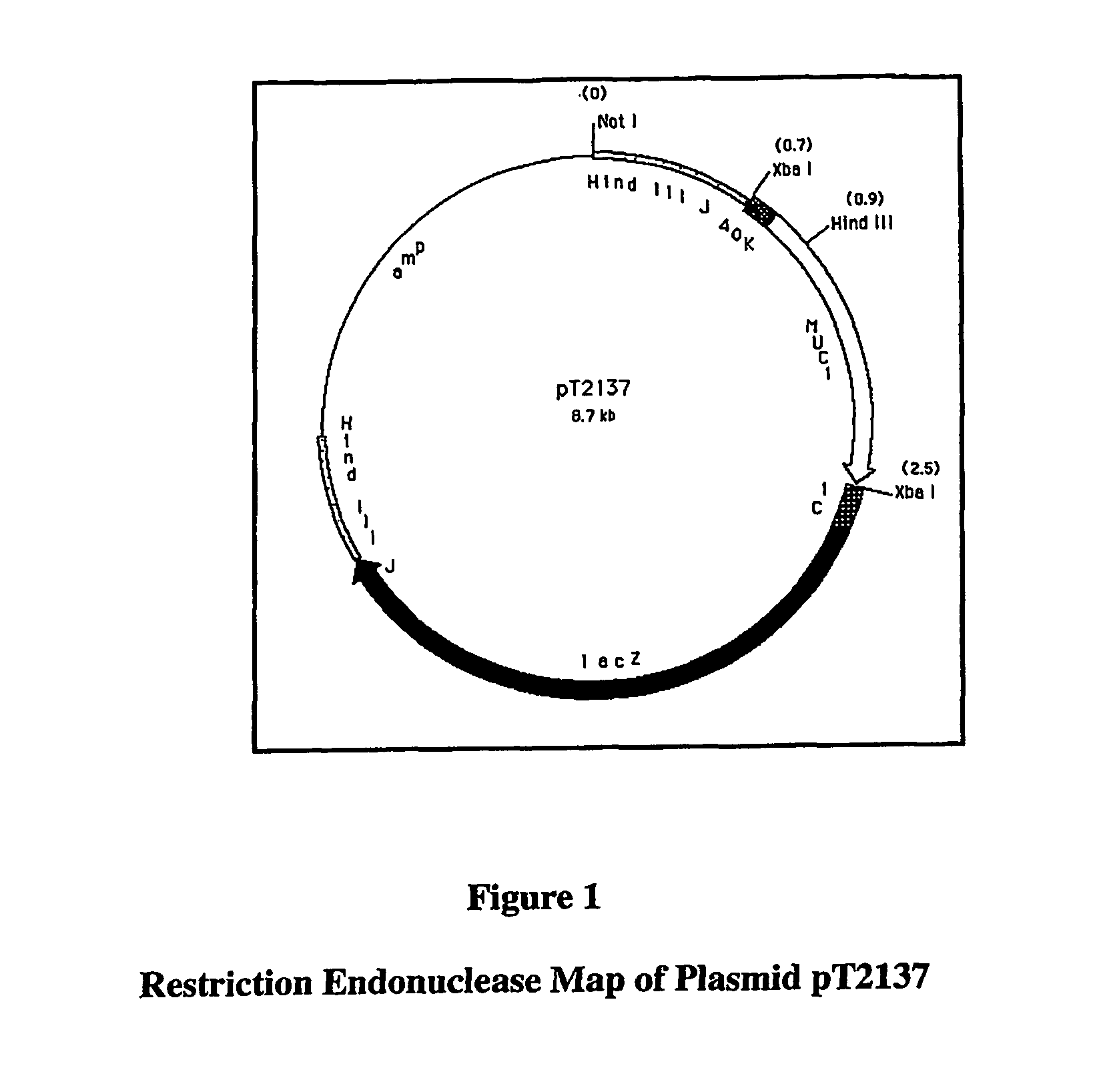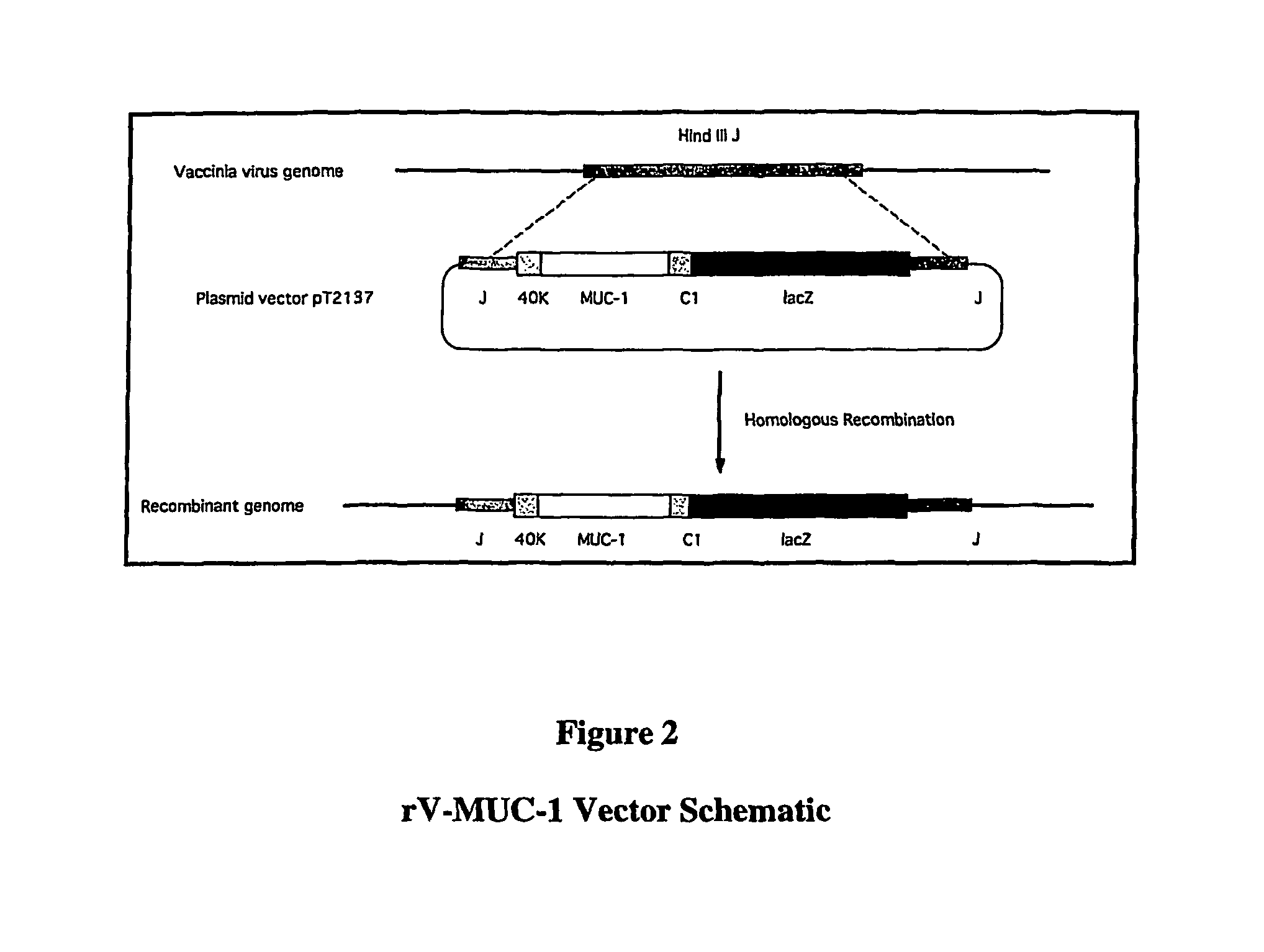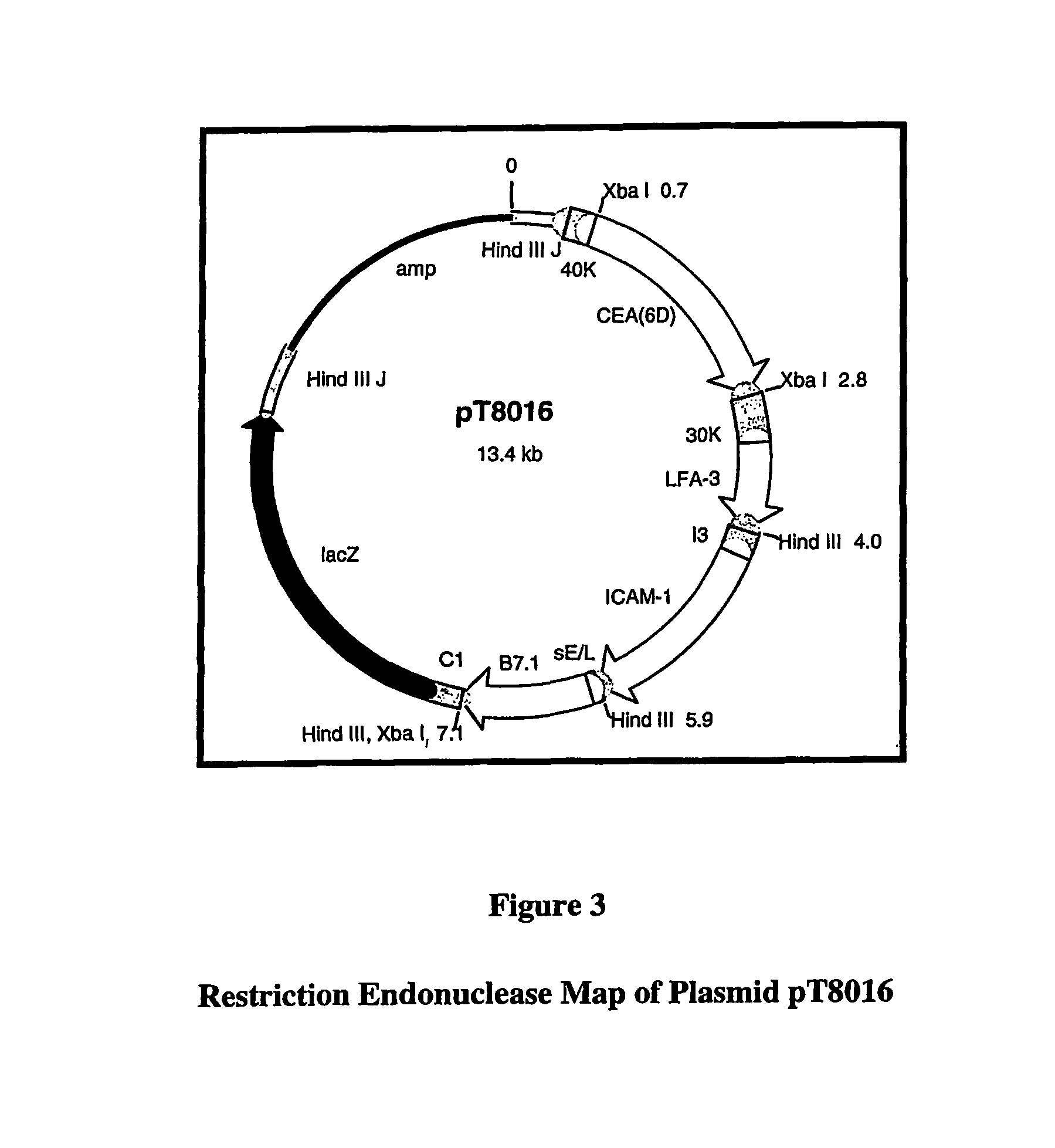System for treating and preventing breast cancer
a breast cancer and immune response technology, applied in the field of immunotherapy, can solve the problems of breast cancer inability to eliminate tumors, high cost, and high risk of breast cancer, and achieve the effect of preventing or delaying the onset of breast cancer
- Summary
- Abstract
- Description
- Claims
- Application Information
AI Technical Summary
Benefits of technology
Problems solved by technology
Method used
Image
Examples
example 1
rV-MUC-1
[0194]rV-MUC-1 consists of a live recombinant vaccinia virus that expresses the human MUC-1 tumor antigen. MUC-1 is overexpressed in a number of cancers, including breast, ovarian, and pancreatic carcinomas. In addition, abnormal glycosylation of MUC-1 in carcinoma cells makes the tumor-derived MUC-1 antigenically distinct from normal MUC-1.
[0195]In summary, the parental virus used for the generation of the rV-MUC-1 vaccine was a plaque isolate from the seed stock of virus used by Wyeth to produce the licensed Dryvax® Smallpox Vaccine. rV-MUC-1 was constructed via homologous recombination in vivo between the parental vaccinia virus DNA and a plasmid vector that contains the MUC-1 gene. The plasmid vector also carries the E. coli lacZ gene, which was simultaneously inserted into the recombinant genome with the MUC-1 gene. A chromogenic assay for β-galactosidase, encoded by the lacZ gene, was used to select the final vaccine candidate, which was verified by genomic and protein...
example 2
rV-CEA(6D) / TRICOM
[0206]rV-CEA(6D) / TRICOM consists of a live recombinant vaccinia virus that co-expresses a modified form of carcinoembryonic antigen (CEA), leukocyte function associated antigen-3 (LFA-3), intercellular adhesion molecule-1 (ICAM-1), and B7.1. CEA is an oncofetal protein that is overexpressed in human colorectal, gastric, pancreatic, breast, and non-small cell lung carcinomas. LFA-3, ICAM-1, and B7.1 are costimulatory molecules expressed on antigen-presenting cells that are required for the efficient activation of T cells.
[0207]In summary, the parental virus used for the generation of this vaccine was a plaque isolate from the seed stock of virus used by Wyeth to produce the licensed Dryvax® Smallpox Vaccine. As shown in FIG. 4, rV-CEA(6D) / TRICOM was constructed via homologous recombination in vivo between the parental vaccinia DNA and a plasmid vector, pT8016 (see FIG. 3), that contains the CEA(6D), LFA-3, ICAM-1, and B7.1 genes. The plasmid vector also carries the E...
example 3
rF-CEA(6D) / TRICOM
[0216]rF-CEA(6D) / TRICOM consists of a live recombinant fowlpox virus that co-expresses a modified form of carcinoembryonic antigen (CEA), leukocyte function associated antigen-3 (LFA-3), intercellular adhesion molecule-1 (ICAM-1), and B7.1. CEA is an oncofetal protein that is overexpressed in human colorectal, gastric, pancreatic, breast, and non-small cell lung carcinomas. LFA-3, ICAM-1, and B7.1 are costimulatory molecules expressed on antigen-presenting cells that are required for the efficient activation of T cells.
[0217]In summary, the parental virus used for the generation of this vaccine was plaque-purified from a tissue culture-adapted vaccine strain of FPV. rF-CEA(6D) / TRICOM was constructed via homologous recombination in vivo between the parental fowlpox DNA and a plasmid vector that contains the CEA(6D), LFA-3, ICAM-1, and B7.1 genes. The plasmid vector also carries the E. coli lacZ gene, which was simultaneously inserted into the recombinant genome with ...
PUM
| Property | Measurement | Unit |
|---|---|---|
| diameter | aaaaa | aaaaa |
| diameter | aaaaa | aaaaa |
| volume | aaaaa | aaaaa |
Abstract
Description
Claims
Application Information
 Login to View More
Login to View More - R&D
- Intellectual Property
- Life Sciences
- Materials
- Tech Scout
- Unparalleled Data Quality
- Higher Quality Content
- 60% Fewer Hallucinations
Browse by: Latest US Patents, China's latest patents, Technical Efficacy Thesaurus, Application Domain, Technology Topic, Popular Technical Reports.
© 2025 PatSnap. All rights reserved.Legal|Privacy policy|Modern Slavery Act Transparency Statement|Sitemap|About US| Contact US: help@patsnap.com



